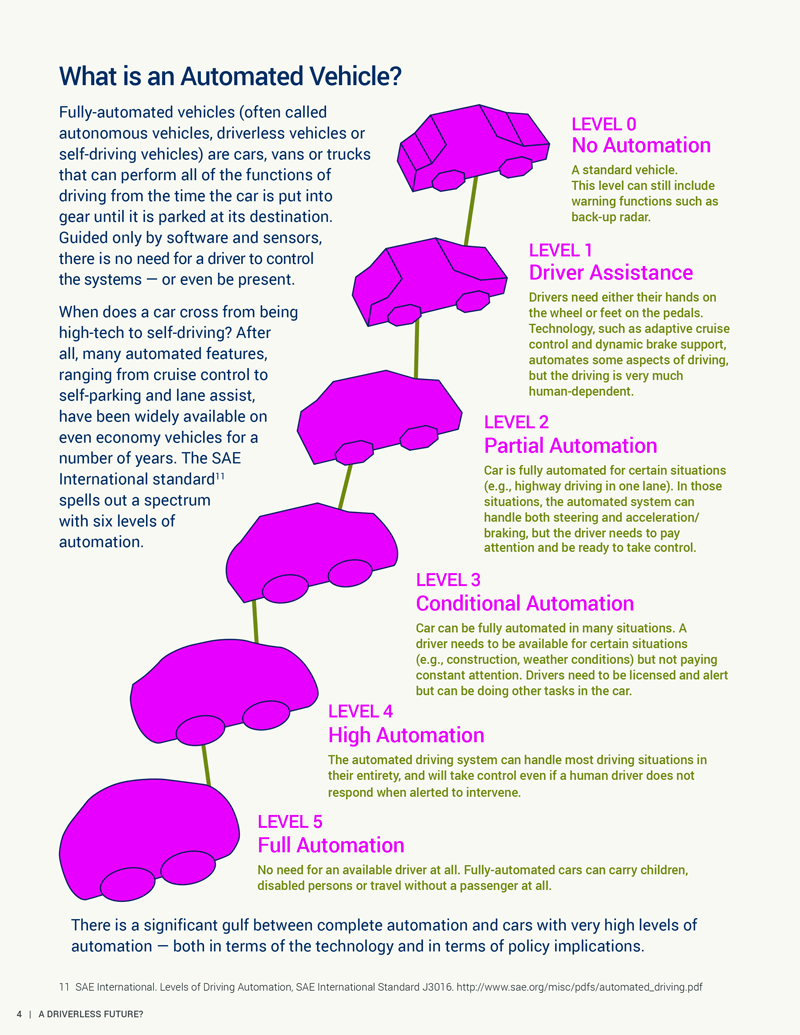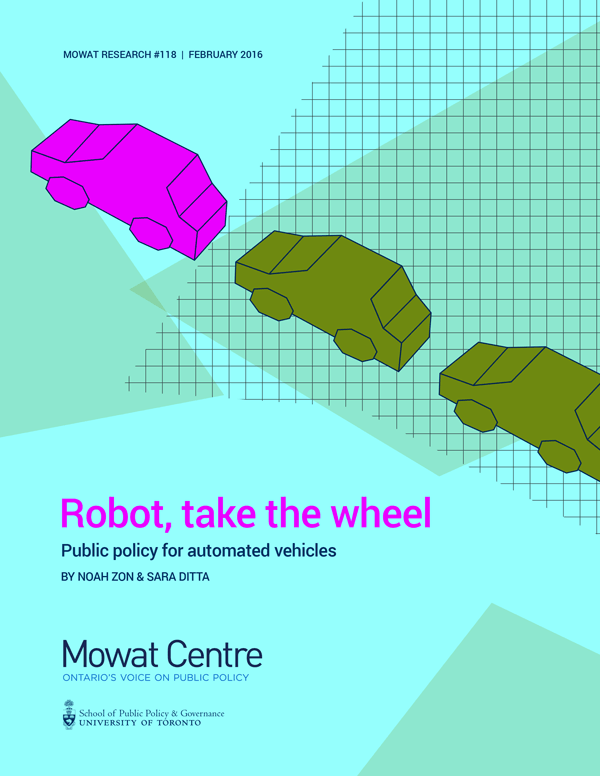February 10, 2016
Public policy for automated vehicles
Automated vehicles present a potentially revolutionary change to the way that we move people and goods. At the current pace, they could be ready for public roads on a wide scale within five to ten years.
This report looks at the range of near- and long-term policy implications presented by automated vehicles to provide policymakers with a background to chart a path forward.
Overview
Automated vehicles present a potentially revolutionary change to the way that we move people and goods. This technology is already developing quickly. Today, many vehicles offer a significant array of computer-assisted driving features. Meanwhile, fully-automated vehicles are being developed and tested both by traditional auto manufacturers and new entrants. Automated vehicles could be ready for public roads within five to ten years. Before they reach our roads, governments need to consider potential policy implications and develop a framework that balances the many interests and issues at play.
This report provides an overview of automated vehicle technologies and the range of near- and long-term policy implications that they present. The goal is to provide policymakers with an on-ramp toward understanding the opportunities and challenges that come with this disruptive technology, as well as to provide a framework to chart a path forward.

What is an automated vehicle?
Introduction
A century ago, Ford Model Ts began rolling off assembly lines and into our cities and towns, bringing with them significant changes to how and where we live, work and play. While the automobile had been around as a technology for decades, few could predict how the wide availability of cars would ultimately shape our cities and our behaviours through the creation of highways, suburbs and office parks — all enabled by the mass availability of cars.
Continue Reading
While the pace of technology development and adoption is difficult to predict, these vehicles may be ready for our roads within a few years. But before they hit the streets, we will face a whole host of questions about how to update our public policy framework to adapt to these new technologies. For example, one of the main ways that we currently keep our roads safe is through rules around who can drive (e.g., licensed and sober adults, without visual impairment). However, driver licensing is moot if we don’t rely on manual control. The policy implications go well beyond the safety of our roads or liability and insurance for accidents. The widespread adoption of automated vehicles (or AVs) could also have major impacts on the shape of our cities and public infrastructure, environmental impacts, accessibility and inclusion, economic growth and productivity, privacy, and public finance.
While there is still a long way to go in creating a driverless future, the regulatory and policy barriers may outweigh the technological hurdles. Without a new policy framework, we will exacerbate the challenges presented by this change and fail to realize potential benefits. Preserving the status quo is not a realistic option. There are, however, many questions about the right approach for government in response to this significant turning point in transportation.
This report is designed to provide policymakers with a better understanding of automated vehicles and the most important policy implications that they present, including both how we prepare for these vehicles on our roads and their broader social, economic and environmental impacts. Given the long road ahead, this report will also present recommendations for governments on how to move forward.
Authors
Noah Zon
Sara Ditta
Release Date
February 10, 2016
ISBN
978-1-77259-016-6
Mowat Research
No. 118








